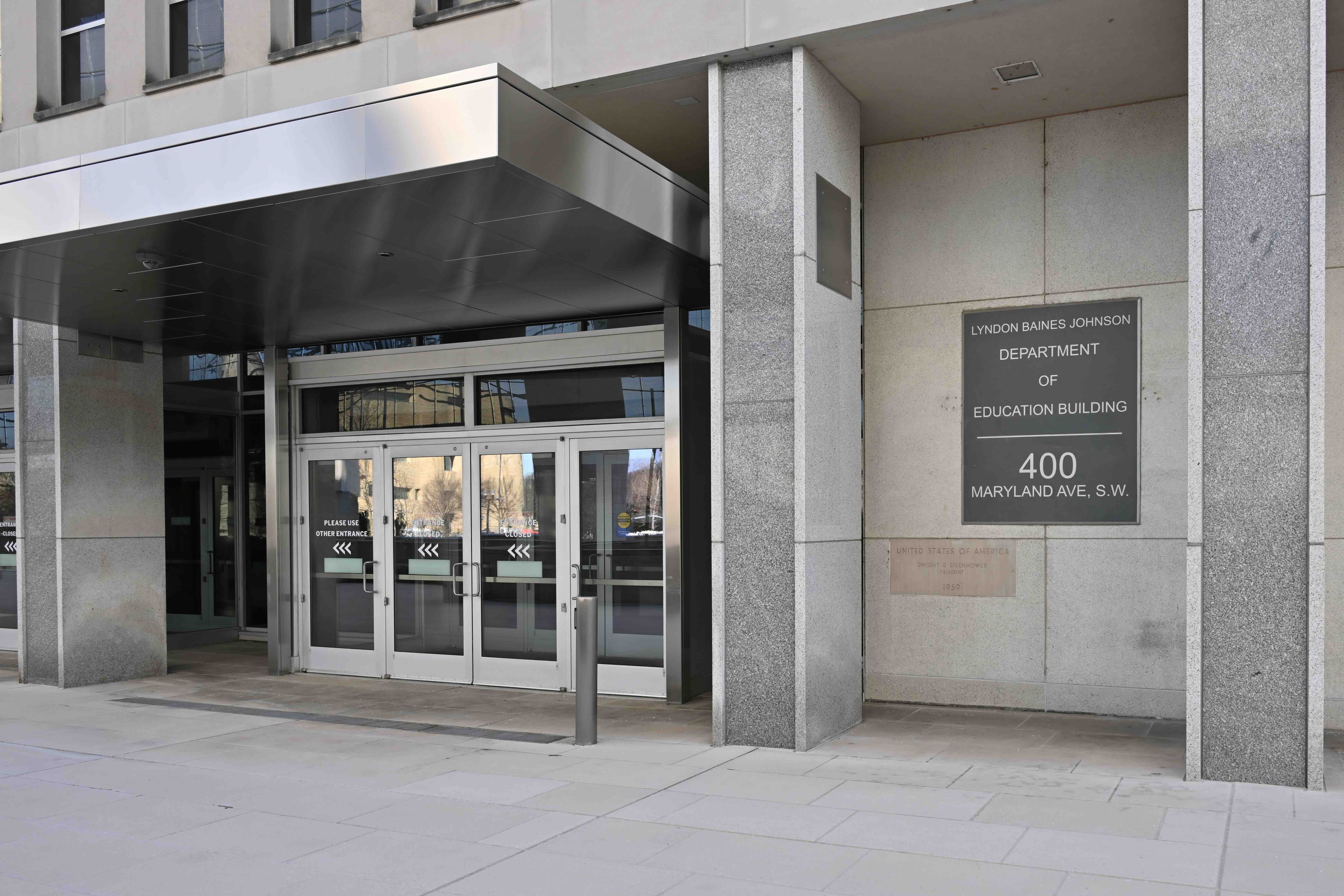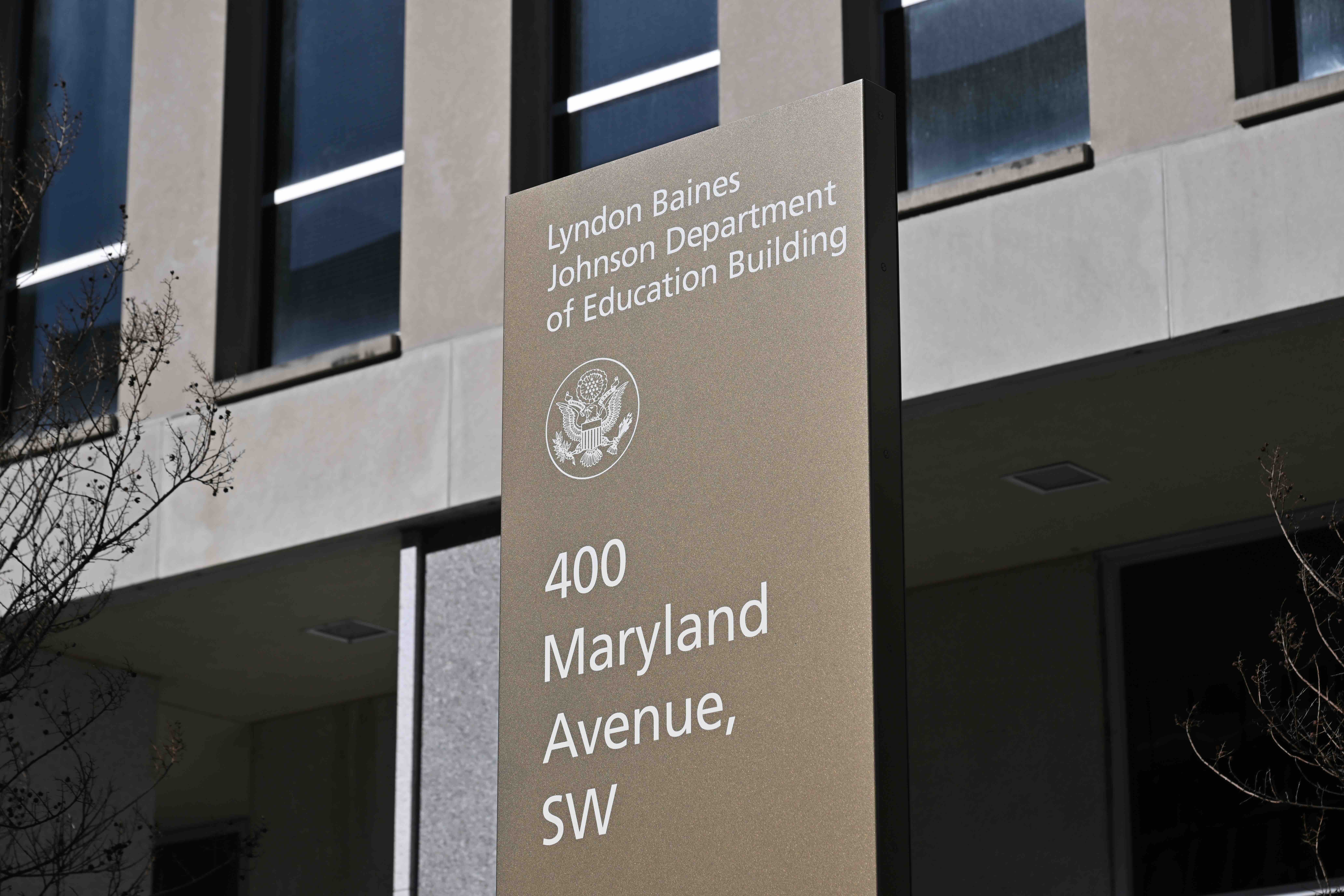UCLA community reacts, responds to Department of Education restructuring

The Department of Education building is pictured. President Donald Trump signed an executive order March 20 to close the Department of Education, raising concerns about how public universities like UCLA may be affected. (Courtesy of G. Edward Johnson/Wikimedia Commons)
By Brandon Liu
March 28, 2025 7:47 p.m.
This post was updated March 30 at 8:30 p.m.
Recent changes at the Department of Education have raised concerns about how public universities like UCLA could be affected.
President Donald Trump signed an executive order March 20 to close the Department of Education in an effort to increase state control over education one week after laying off nearly 50% of the department’s workforce. The White House announced that core functions of the agency, such as Pell Grants and Title I initiatives, will remain, while the future of federal student loans remains unclear. Restructuring the federal agency could affect funding and support services across the nation, including state education departments.
Joseph Bishop, co-founder and executive director of the UCLA Center for the Transformation of Schools, said the Department of Education was originally founded because states needed additional support.
“As a country, we don’t have a federal right to education … so the Department of Education plays a really critical role,” Bishop said. “It’s not a perfect vehicle, but it’s done a lot, especially around the war on poverty going back to the ’60s.”
In the late 1800s, an office of education was created to collect information about the nation’s schools. However, it was not formalized into a government department because of concerns about federal overreach into local school governance, according to the United States. Department of Education website.
With the fight against poverty and for civil rights in the 1960s prompting increased government spending on education, then-President Jimmy Carter created a federal agency in 1979 to consolidate the growing education-related functions scattered across different government departments, according to the Department of Education website and EducationWeek. However, there has not been any federally established or constitutional right to education in the U.S.
As the chief partner to state education departments, nonprofit research centers and private institutions, the Department of Education’s broader mission includes making higher education more accessible. More specifically, it oversees the distribution of federal funds to support key programs such as Pell Grants, which help students pay for college, and Title I initiatives – which support schools with a high percentage of low-income students.
State education departments, like California’s, enforce federal guidelines while managing teacher training and licensing, running state assessments and allocating funding for student support programs such as the individualized education plan for special education.
Bishop said state education departments primarily fund public school budgets. For example, UCLA received about 42% of its funding from the state budget in 2021, with additional revenue coming from application fees and tuition, according to UCLA Business and Finance Solutions.
“We have 50 different (education) systems in the U.S. operating simultaneously. We don’t have a centralized system,” Bishop said.
The Department of Education has specified that education in the U.S. is largely a state and local responsibility. This decentralized structure has been reflected in the breakdown of education funding, Bishop added.
“Nine percent of school budgets typically come from the federal government. The other 90% is state and local,” Bishop said. “State departments play a huge role.”
In the 2024 fiscal year, the Department of Education spent $268 billion – 4% of the total federal budget – and transferred 25.4% of its spending to state and local governments, according to USAFacts. That same year, California spent $119.2 billion on public education, or 40% of the state’s total budget, with 13.9% coming from federal funds, according to the same source.
Forty-five percent of the Department of Education’s spending in 2024 was disbursed by the Office of Federal Student Aid. About 17 million students fill out the Free Application for Federal Student Aid through the Office of Federal Student Aid each year to apply for federal loans, grants and scholarships to attend college or vocational programs. As of 2024, the Office of Federal Student Aid held loans totaling $1.5 trillion for around 43 million borrowers, according to the U.S. Government Accountability Office.
Additionally, nearly 60% of UCLA’s research funding between June 2019 and June 2020 came from the federal government – including agencies such as the Institute of Education Sciences within the Department of Education and the National Institutes of Health – providing grants for research in education, engineering and the life and physical sciences.
Keri Lintz, a doctoral student at the UCLA Luskin School of Public Affairs, said while downsizing the agency may affect funding, due to congressional gridlock, it is unlikely the Department of Education will shut down.
“To take down a cabinet-level agency, you would need 60 votes in the Senate. There’s 53 Republicans, and so it seems it would be a tough move in the first place,” Lintz said. “Even if you did that, there’d have to be decisions around what to do with the programs that the department administers.”
The restructuring or elimination of the Department of Education has also raised concerns about educational equity. Lily Hu, a first-year education and public affairs student, said she feels federal funding cuts could impact accessibility.
“I feel like it will increase inequality, especially for underprivileged-background people,” Hu said. “We talk about equity or equality. We should give not everyone the same resources, but people that have a lack of resources more resources, so we can maybe start at a similar level.”
Bishop also said major changes to the Department of Education could impact social mobility in higher education and public service employment, particularly limiting opportunities for low-income students who may rely on financial assistance to get an education.
In response to the Office of Management and Budget’s memo temporarily pausing federal grants and financial assistance programs, UC President Michael Drake sent a message to all UC campuses Jan. 28, reaffirming UC’s commitment to its values and supporting the student community. UCLA-specific and UC systemwide federal updates web pages are also currently available for students to navigate the new federal changes.
Hu said messages like these are crucial for reassuring students.
“UCLA should ensure that they (students) have the things to finish their college, at least when they’re enrolled in university,” Hu said. “That’s (what) the students most care about, and they need it.”




